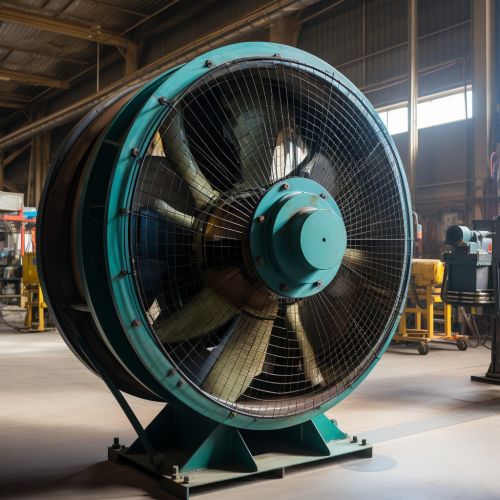Active Cooling
Overview
Active cooling refers to a method of heat transfer that uses energy to facilitate the process. This is in contrast to passive cooling, which relies on natural heat dissipation without the use of energy. Active cooling systems are commonly used in a variety of applications, from computer systems to industrial processes and even in space technology.
Principles of Active Cooling
Active cooling systems operate based on the principles of thermodynamics, specifically the second law, which states that heat naturally flows from an area of high temperature to an area of low temperature. By using energy, active cooling systems can accelerate this process and even make heat flow in the opposite direction.
Types of Active Cooling
There are several types of active cooling systems, each with its own specific applications and advantages.
Forced Air Cooling


Forced air cooling is the most common type of active cooling, used in a wide range of applications from computer systems to industrial machinery. It works by using fans to increase the airflow over the surface of an object, thereby increasing the rate of heat dissipation.
Liquid Cooling
Liquid cooling is another type of active cooling that uses a liquid, usually water or a specialized coolant, to absorb heat from an object and then dissipate it elsewhere. This method is often used in high-performance computer systems and in industrial processes where high levels of heat are generated.
Refrigeration
Refrigeration is a type of active cooling that uses a cycle of evaporation and condensation to remove heat. This is the method used in air conditioners and refrigerators.
Thermoelectric Cooling
Thermoelectric cooling uses the Peltier effect, where heat is absorbed or emitted when an electric current is passed through a junction of two different materials.
Applications of Active Cooling
Active cooling systems are used in a wide range of applications, from everyday household appliances to industrial processes and space technology.
Computer Systems
In computer systems, active cooling is used to dissipate the heat generated by electronic components, such as the central processing unit (CPU) and the graphics processing unit (GPU). This is usually achieved through a combination of heat sinks and fans.
Industrial Processes
In industrial processes, active cooling is often used to control the temperature of machinery and equipment. This can be critical in industries such as manufacturing, where overheating can lead to equipment failure and production downtime.
Space Technology
In space technology, active cooling systems are used to control the temperature of spacecraft and satellites. This is particularly important in space, where the vacuum environment makes it difficult for heat to dissipate naturally.
Advantages and Disadvantages of Active Cooling
Like all cooling methods, active cooling has its advantages and disadvantages.
Advantages
One of the main advantages of active cooling is its efficiency. Because it uses energy to facilitate heat transfer, it can cool objects more quickly and to a lower temperature than passive cooling. This makes it ideal for applications where high levels of heat are generated.
Disadvantages
The main disadvantage of active cooling is that it requires energy, which can increase operating costs and have environmental impacts. It also involves moving parts, which can wear out and require maintenance.
